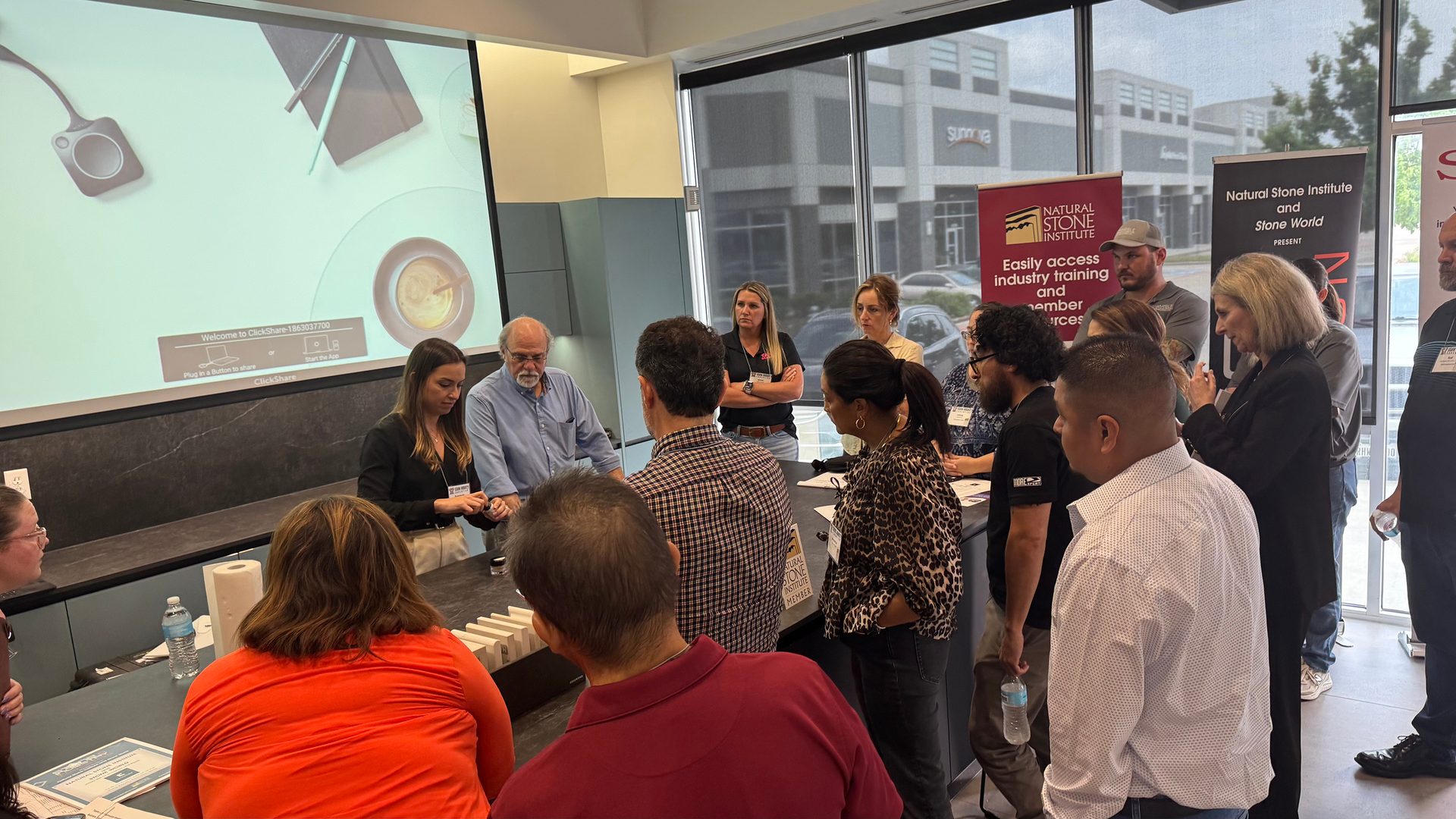How to Handle Stone Staining and What to Do to Avoid It from the Start
Several industry professionals emphasize the importance of setting customer expectations about the performance of the different types of natural stone, as well as methods to maintain and clean them
by Jennifer Richinelli
Photo by pamirc / iStock / Getty Images Plus / via Getty Images
During a recent panel discussion at a Stone Industry Education event hosted by Cosentino at its Houston, TX, design center, the topic of stone maintenance and cleaning surfaced. While there are techniques that are often successful to remove stains from natural stone, the panelists agreed educating customers on the characteristics of each stone variety is extremely important during the material selection process. Setting expectations helps to eliminate problems down the road.
Jacqueline Tabbah of International Stoneworks in Houston works in the stone restoration business. She explained that a poultice can often assist in removing stains from natural stone. “When you do the application, you cover it, protect the edges, and leave it for no longer than 24 hours,” she said. “After that, you return and clean it up. You will usually see some residue left — sometimes quite a bit — and that is often because the surface was not in great condition to begin with.
“Once you have cleaned it, the surface may still be wet,” Tabbah went on to say. “At that point, you do not know if the treatment worked. You have to wait for it to dry and see if it draws out the stain completely. Sometimes it requires a second application. In more severe cases, especially when stains are deep, the process might not work at all. But you will not know unless you go through the process.”

Fernanda Stuani, general manager of Cosentino’s Houston design center, demonstrated the stain-resistant qualities of the manufacturer’s Sensa product line. Photo by Jennifer Richinelli.
According to Tabbah, stains are especially difficult to remove when the moisture has soaked in from the edges or underneath, as it tries to escape through other parts of the surface. “Those deeply embedded stains are the hardest to deal with,” she said. “Sometimes we are successful, and other times not. If the stain is more superficial -- like from something that spilled directly on top — it is usually easier to remove because you can identify where it came from and treat it more effectively. Unfortunately, we cannot always guarantee results. I always tell homeowners: ‘We will try, but it may not work.’ It can be disappointing if it fails, but it is important to set expectations realistically.”
Sealing the surface is key, said Tabbah, adding that there are various sealers available, many of which come with warranties. “I recommend sealing at least once a year — more frequently if the material is very porous — to help prevent future staining. A penetrating or film-forming sealer can be effective, depending on the surface.”
Emely Roque of Yellowstone Marble & Granite, a custom fabricator in Houston, said she often receives phone calls from homeowners concerned about staining. “A big part of our job is educating clients and helping them choose the right material based on their lifestyle,” she said. “For those worried about stains or who have had issues in the past, we guide them toward options that are more resistant and easier to maintain. For example, we have partnered with manufacturers that create surfaces mimicking natural stone beautifully. One color we carry, called “T,” looks nearly identical to Taj Mahal quartzite. It is a dense material that does not require sealing, offering a great low-maintenance option.”
“Ultimately, every material has its pros and cons,” explained Fernanda Stuani, general manager of Cosentino’s Houston design center. “Our role is to help customers navigate those choices and find what works best for them. Personally, I have been with the company for nearly five years, and I have not had a single complaint about staining with the products we offer -- especially with Sensa, which we confidently provide.”
Sensa is Cosentino’s collection of granite and quartzite with special stain-resistant protection. Stuani demonstrated the product’s stain-resistant qualities during the Stone Industry Education event.
Rod Sigman CTC, CCTS, CSMTT is the business development leader for MAPEI Corporation’s UltraCare® line of products for the care and maintenance of tile and stone products. Sigman has a proven track-record of success in the flooring industry, with experience in both training and education, as well as all support functions pertaining to national sales accounts and distribution. He has served on the technical committees of the National Tile Contractors Association (NTCA) and the Natural Stone Institute (NSI). He has successfully completed the Ceramic Tile Consultant Course, is a Certified Ceramic Tile Specialist (CCTS) and is also a Concrete Slab Moisture Testing (CSMT) Technician. Further, he was recognized by the Marble Institute of America (now the Natural Stone Institute) as a significant influence for the stone industry.

